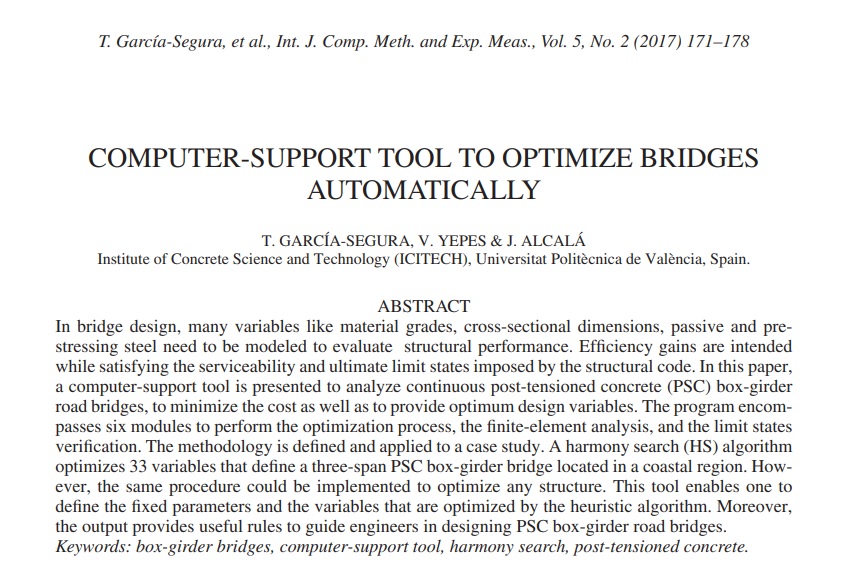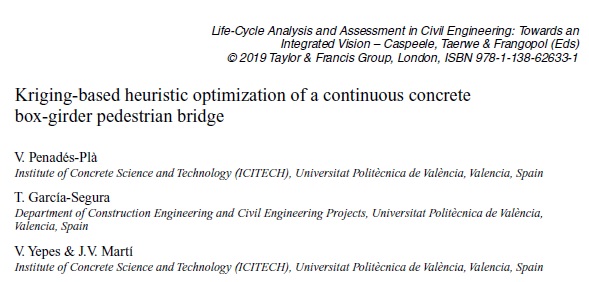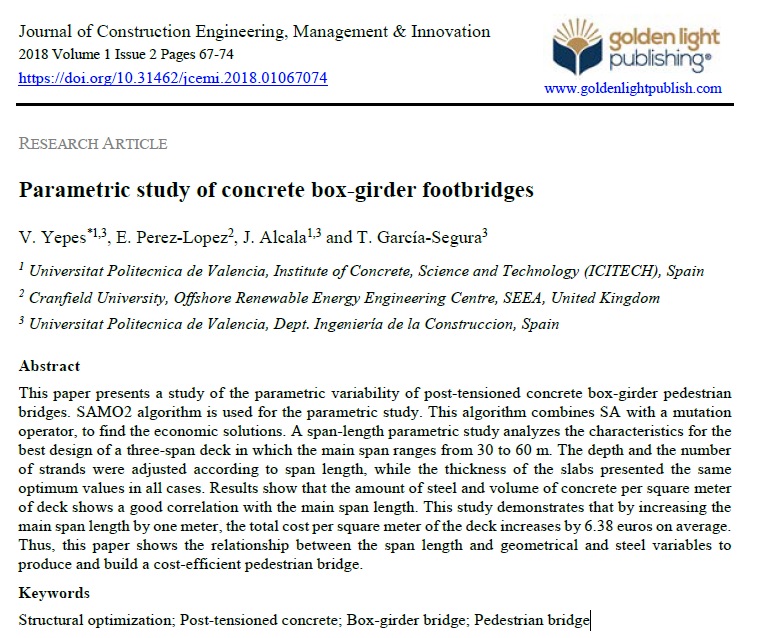
En todos los problemas estructurales existe una variabilidad o incertidumbre asociada. En el diseño de estructuras hay parámetros de diseño como las dimensiones de la estructura, las características mecánicas de los materiales o las cargas de diseño que pueden tener variaciones respecto al valor de diseño. Lo mismo ocurre a la hora de valorar una función objetivo asociada la estructura. Por un lado, a la hora de diseñar una estructura, el valor nominal utilizado es aquel que tiene una baja probabilidad de ocurrir (por ejemplo, la resistencia característica del hormigón es aquella que tiene una probabilidad del 5% de fallo). Además, se asignan coeficientes de seguridad asociados a una probabilidad de fallo determinada. Por otro lado, a la hora de valorar una función objetivo, como el coste o algún impacto medioambiental, el valor unitario de esta función suele ser la media. Dado este enfoque, la optimización estructural se convierte en una optimización determinista que desprecia los efectos de la incertidumbre asociada. Esto significa que la estructura tiene un comportamiento óptimo solo bajo las condiciones definidas inicialmente, pudiendo la respuesta variar significativamente cuando los valores se alejan de los valores de diseño.
A continuación os dejo una comunicación que presentamos en el 5th International Conference on Mechanical Models in Structural Engineering, que se celebró del 23 al 25 de octubre de 2019 en Alicante (España). Se trata de la optimización de un puente de sección en cajón de hormigón postesado utilizando un metamodelo tipo Krigring.
Abstract:
All the structural problems have an associated variability or uncertainty. In the design of structures, there are parameters such as the dimensions of the structure, the mechanical characteristics of the materials, or the loads that can have variations concerning the design value. The goal of robust design optimization is to obtain the optimum design and be less sensitive to variations of these uncertain initial parameters. The main limitation of the robust design optimization is the high computational cost required due to the high number of optimizations that must be made to assess the sensitivity of the objective response of the problem. For this reason, the kriging model is applied to carry out the optimization process more efficiently. This work will apply robust design optimization to a continuous pedestrian bridge of prestressed concrete and box sections.
Keywords:
Post-tensioned concrete; Box-girder bridge; Robust design optimization; RDO; Kriging
Reference:
YEPES, V.; PENADÉS-PLÀ, V.; GARCÍA-SEGURA, T. (2019). Aplicación de optimización Kriging para la búsqueda de estructuras óptimas robustas. 5th International Conference on Mechanical Models in Structural Engineering, CMMoST 2019, 23-25 oct 2019, Alicante, Spain, pp. 81-94. ISBN: 978–84–17924–58–4







